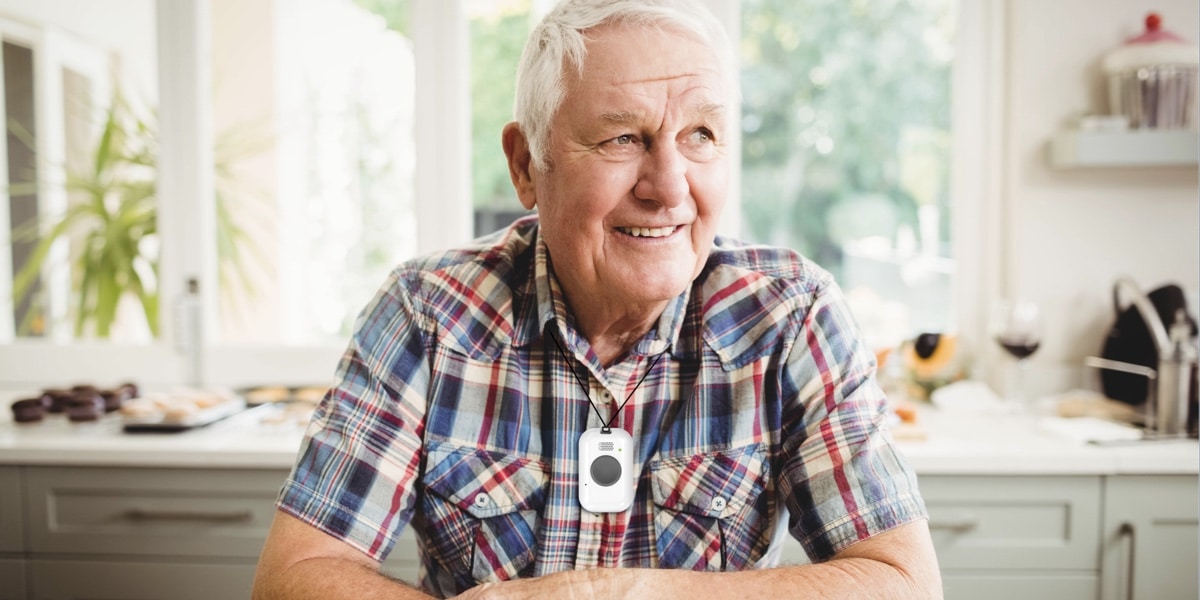The home has often been considered the “black box” of healthcare because it offers limited visibility for payers, providers and caregivers into an individual’s health status. From falls and injuries to declines in chronic conditions and cognitive state, these events typically happen inside the four walls of the home, making them more difficult to detect, prevent and treat in their earliest stages.
For many aging adults, who prefer to remain at home, the ability to age in place may not be a viable option without the right support. Around-the-clock care at home is costly, averaging as much as $15,000+ per month and nursing home care services can average up to $100,000+ per year. However, connected health technologies provide a cost-effective solution that are redefining what is means to age in place by offering greater visibility into the home and helping to bridge the gap between patients, payers, providers, and their caregivers.
Connected health technologies can enable caregivers, clinicians, and healthcare organizations to meet aging and vulnerable populations where they are, in the comfort and familiarity of their homes, while monitoring their health and well-being. Sudden changes in a patient’s condition can often be identified earlier, and treatment can be facilitated faster to prevent a fall, adverse event, or further clinical deterioration. This enables healthcare providers and plans to deliver truly preventative care management that reduces unnecessary hospitalizations, improves outcomes, and lowers care costs.
Connected Health Technologies That Are Enabling Aging and At-Risk Populations To Safely and Successfully Age in Place
Medication Monitoring
It is estimated that roughly 50% of seniors do not take their medication as prescribed.
Whatever the reason for medication nonadherence, the consequences result in poorer health, an increased risk of hospitalization, and higher mortality. Connected health technologies such as automated medication dispensers deliver medication on time, making it nearly impossible to miss a dose or accidentally over-medicate. If a scheduled medication dose is missed, the device notifies a control center, which contacts the caregiver via text message, email or automated phone call. This helps to ensure adherence and eliminate the anxiety of managing medications while delivering peace of mind to patients, caregivers and families.
Personal Emergency Response Systems (PERS)
PERS, also known as medical alert devices, deliver aging adults access to emergency and non-emergency assistance with just the push of a button. Fall detection sensors on the devices can alert the system of a fall, even in the individual is unable to push their button. GPS location tracking can help caregivers or family members locate loved ones who may have a tendency to wander.
Not only are PERS simplistic designs created to accommodate the varying needs of an aging population, but technologically, PERS sidesteps the barriers to use that the internet can pose to many. Proven to help reduce unnecessary hospital admissions and ED visits, PERS is a lifesaving connected care technology that is both reliable and dependable.
Remote Patient Monitoring (RPM)
RPM is critical for managing the care of aging adults with chronic and acute conditions because it enables clinicians to remotely monitor and analyze their condition from the comfort and familiarity of their homes. Remote monitoring devices help ensure patients have continuous access to their care teams, treatment plans, and personal health data.
Equipped with the patient’s critical health information, healthcare providers can make more informed clinical decisions, provide better diagnoses, identify problems earlier, and deliver more personalized care and treatment. RPM helps mitigate concerns about the “black box” situation of the home by allowing providers to have a more holistic view of their patient’s health and enabling more comprehensive and preventative care.
A cost-utility analysis published in the Journal of American Medicine Association (JAMA) highlighted exciting new research that suggested remote monitoring could potentially be associated with 87% fewer hospitalizations, 77% fewer deaths and reduced per-patient costs of $11,472 over standard care and gains of 0.013 quality-adjusted life-years.3
Activity and Mobility Monitoring
Another connected care technology that can assist healthcare organizations to monitor individuals’ health and wellness is activity and mobility monitoring. Dashboards with activity and mobility levels and other health data can help providers and plans identify and predict those at risk for hospital transport or admission and alert them of individuals who may be in decline and in need of more services. Activity and mobility monitoring can help support healthcare organizations in delivering more timely, efficient, and effective care.
Technologies such as PERS, medication monitoring, and RPM have been proven to help reduce unnecessary hospitalizations and improve care while enabling seniors to safely age in place. These solutions empower healthcare organizations and clinicians to go beyond delivering traditional episodic care to providing truly preventative care that leads to earlier interventions, better outcomes and lower costs. Most importantly, connective health keeps aging and vulnerable populations healthier, so they can continue living independently and well at home.

